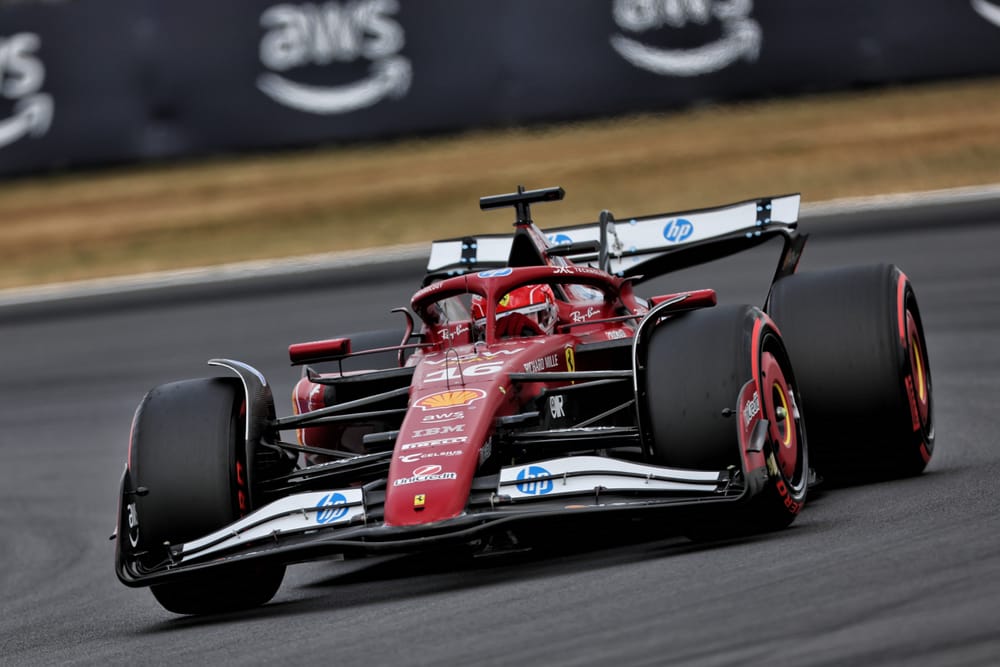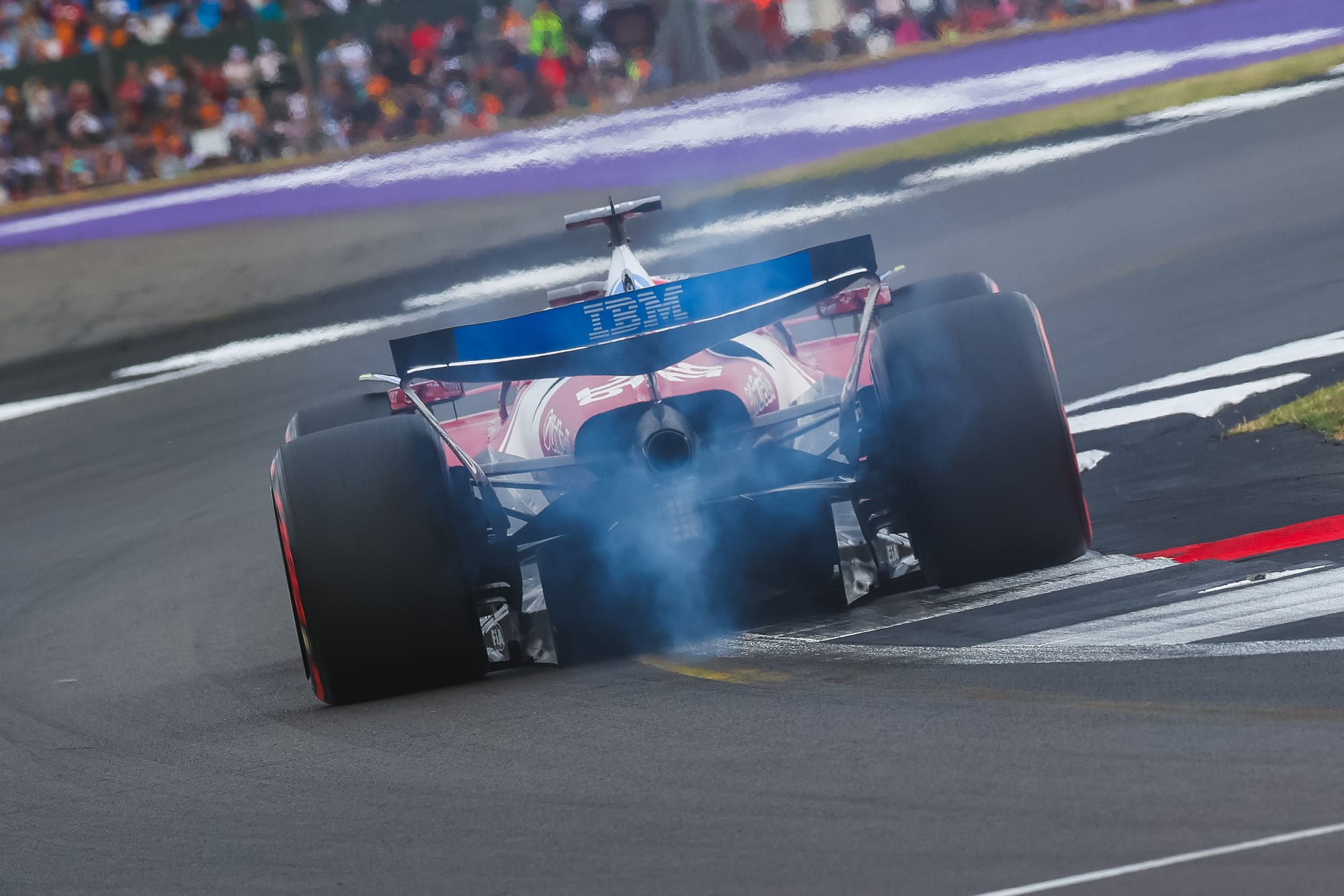With Ferrari set to debut its upgraded rear suspension at Spa there are hopes that, in combination with the major floor upgrade at Silverstone, the SF25's so-far disguised F1 2025 potential will finally be achieved.
As recounted here recently by Gary Anderson, the rear suspension features a lower mounting point for the front upper wishbone, giving an enhanced anti-lift effect.
It is hoped that this, together with any changes made to the central damper, will allow the car to run at the lower ride heights originally envisaged but which had to be revised after the China plank-wear disqualification.
The performance of the car was notably better at Silverstone than in the preceding races (see graph), suggesting that the floor upgrade at least was effective.
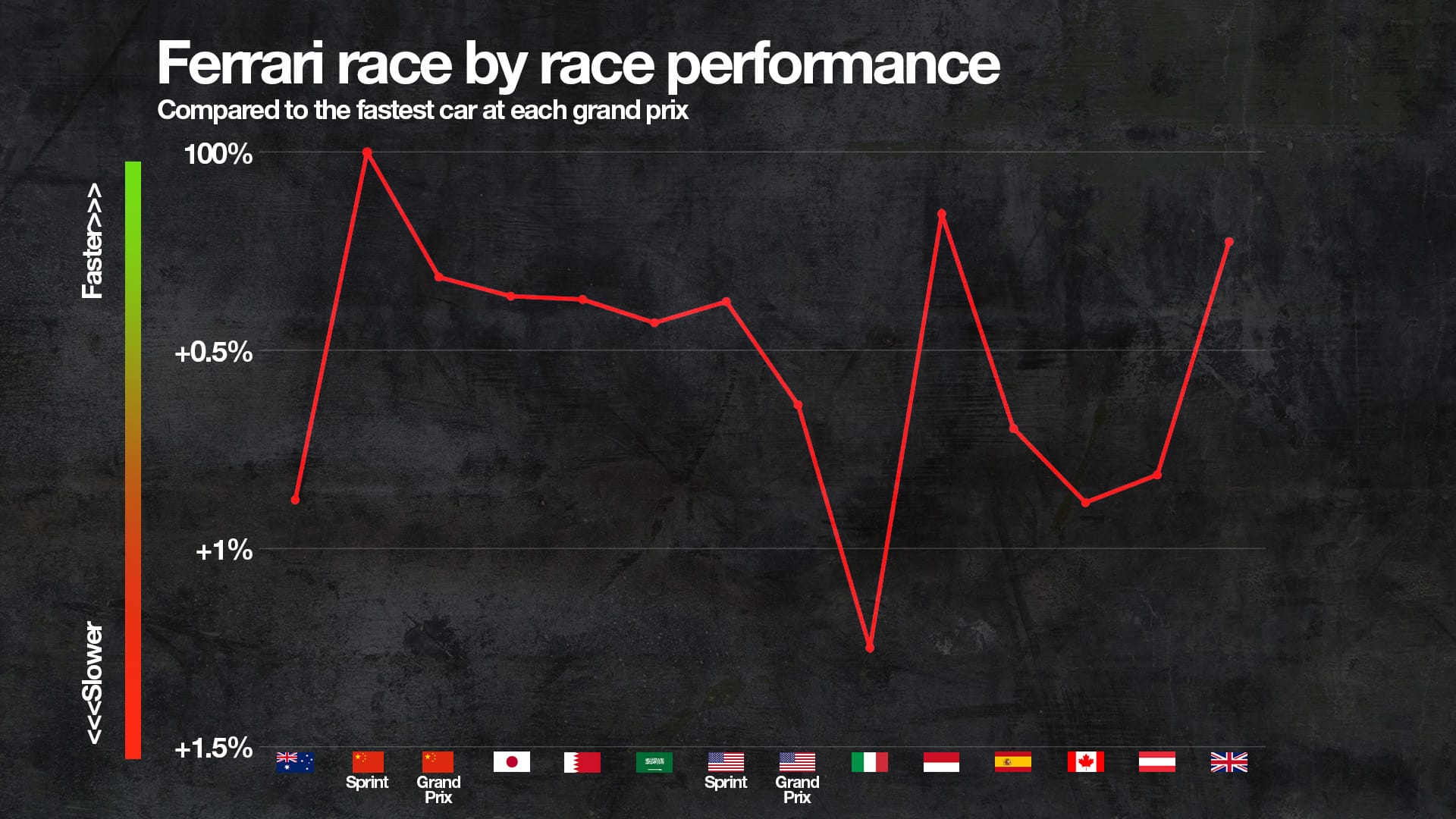
The Ferrari's average qualifying deficit to McLaren so far this year is a chunky 0.388s. The suspension change alone is predicted to be worth no more than 0.1s over a qualifying lap, but it's feasible that it opens a window which allows a better range of set-ups which the team can then fine tune to find more laptime.
This is all unrelated to the power steering complaints Lewis Hamilton has of the car, which we believe to be the issue Hamilton was referring to when he commented that there are features of this car which he absolutely does not want to see carried through onto the 2026 car.
But there is yet another anomaly in the current car's performance, which Charles Leclerc obliquely referenced after qualifying at Silverstone.
"In qualifying we've got issues for sure, particularly from Q2 onwards," he said. "We've been fighting with something inside the car, but it's not an excuse; I need to be better."
He added: "It's unrelated [to the ride-height issue]. It's something we didn't talk about too much.
"It's something that sometimes in some qualifying we had the problem. In some others we have absolutely zero problem with it, but [at Silverstone] it was a bit of a problem.
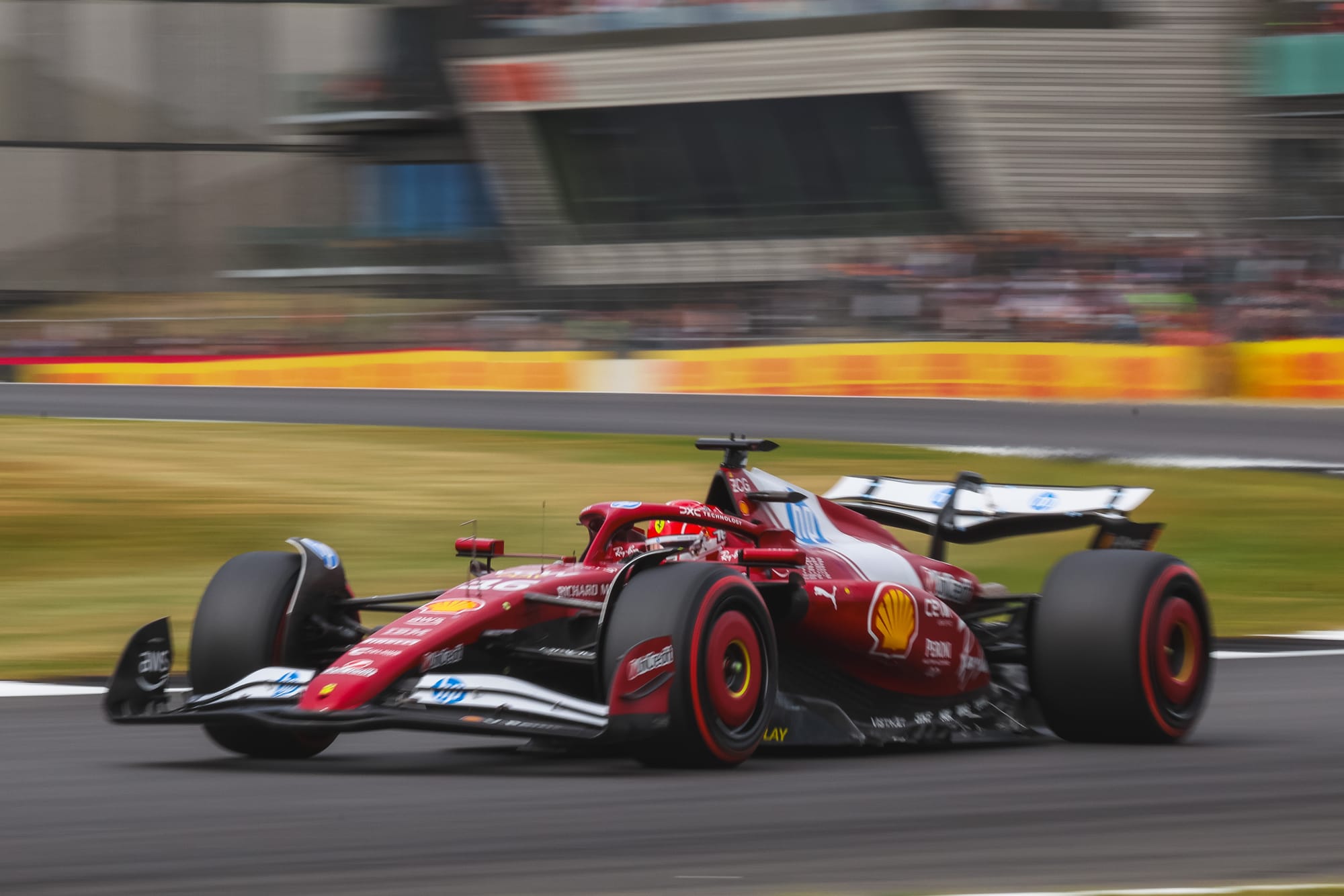
"It's not something I was expecting too much, but it's the way it is, but I can't go too much into detail...
"The issues are very specific, it's not a balance issue, it's not a grip issue. I don't want to go into the details but it's something very weird that we've got to fight with the car - and especially when it's high-speed, it makes it even more difficult.
"I hope we can resolve it."
The fact that it's a problem which is only manifested in Q3 and only on high-speed circuits suggests this is altogether separate from any steering issue. This description is a much better fit with a power unit trait. Two possibilities immediately suggest themselves.
The first is that it is an internal temperature issue when the engine is extended on full throttle for an extended period of time.
If the valves begin to exceed a critical temperature at sustained high-speed running when used on the most aggressive rev limit and mixture settings (as would be the case in Q3 but not necessarily in Q1, Q2 or the race), then the software would automatically correct that by enriching the mixture, using the extra fuel to cool the valves down, so as to save the engine from detonating.
This would of course mean that the engine would gives less than the expected power boost on the lean, full performance mixture setting chosen.
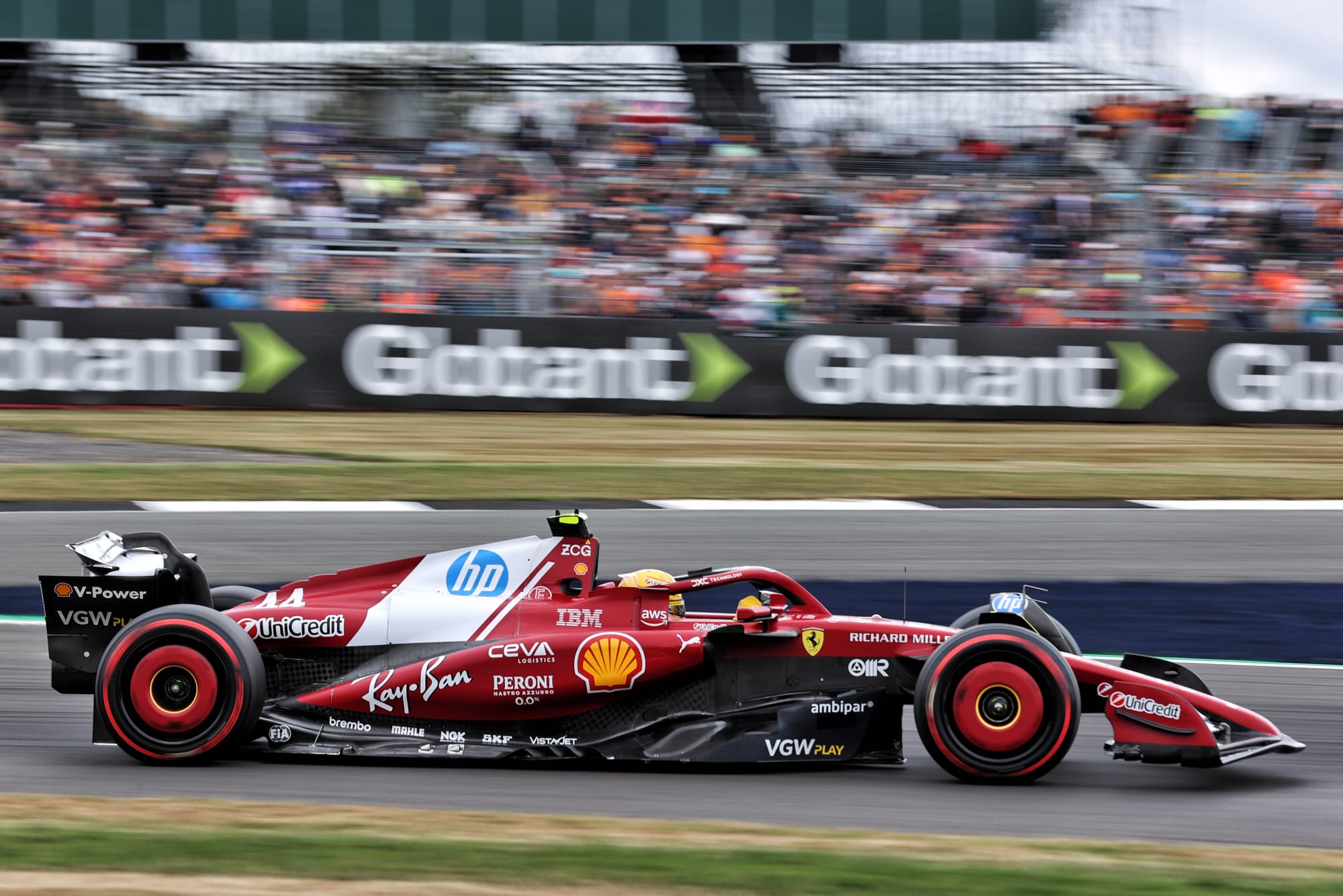
The second is on circuits with lots of flat-out running but relatively little braking, it's possible that the extra flat-out running could drain the battery faster than anticipated and thus the electrical power would not be deployed as efficiently around the lap.
But this seems a less satisfactory explanation than the first.
If we look at the comparison between Q2 and Q3 in all of the races this season, we can see that, of the top four teams, Ferrari is last in how much laptime it finds between the two sessions.
In the 14 qualifying sessions (including Sprint qualifying), Ferrari has not once found the most laptime of the four teams.
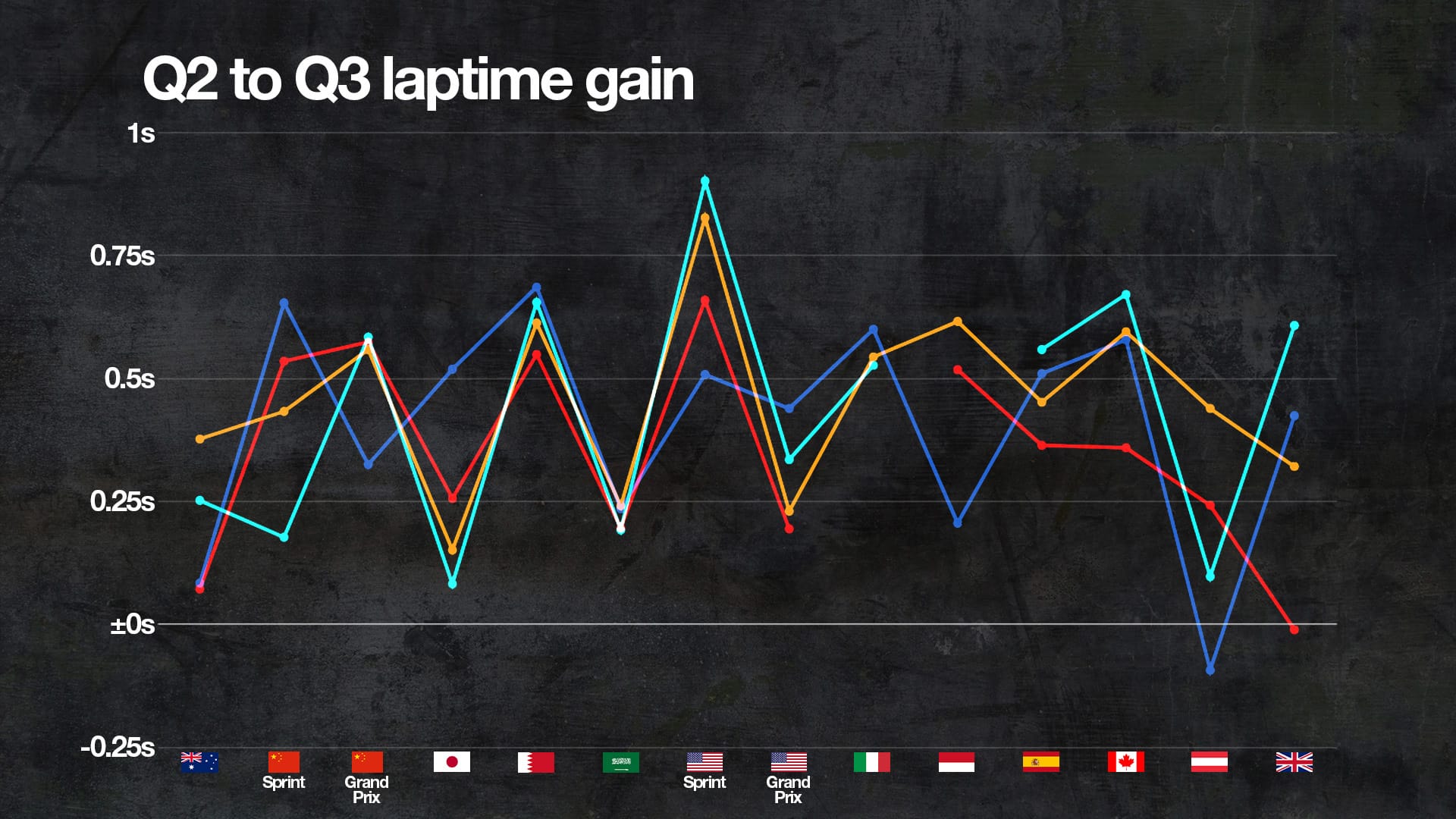
McLaren has found the most on four occasions, Mercedes and Red Bull five apiece. Ferrari zero.
Looking then at the circuits where the Ferrari has found the least laptime from Q2 to Q3, we see Melbourne and Silverstone, two circuits with a lot of full-throttle running, as standouts.
Correlation does not equal causation, but reading between the lines of Leclerc's comments and applying that to the hard data does suggest a power unit reluctant to give its best at extended full throttle.
It seems like there is plenty for Ferrari to be working on in the search for those missing tenths.


